El Cabanyal Highlights
El Cabanyal is the old fisher’s quarter of Valencia located on the city’s seafront. The maritime district was once an independent town called Pueblo Nuevo del Mar, that joined Valencia at the end of the 19th century but it has not lost its essence and its own personality that you will find in architecture, gastronomy or life style and that we have summarised in six keys.
1 – POPULAR MODERNISM
The neighbourhood, which for centuries was the residence of families dedicated to fishing, acquired its current appearance after a devastating fire in 1875 which resulted in the prohibition to rebuild the traditional straw roofed huts called “barracas” (highly flammable). This gave rise to the characteristic two-storey brick houses with brightly coloured tiled façades that replicate the Mediterranean modernist style of the period through a popular lens. The tiles are also a trick to hide the humidity in the walls, natural in an area so close to the sea, so you can find them outside and inside the houses as wainscots.
Strolling through the area you will discover these gorgeous buildings where you can still breathe the lifestyle of a coastal town with the neighbours sitting at the door of the houses because in the Cabanyal people still live in the street.
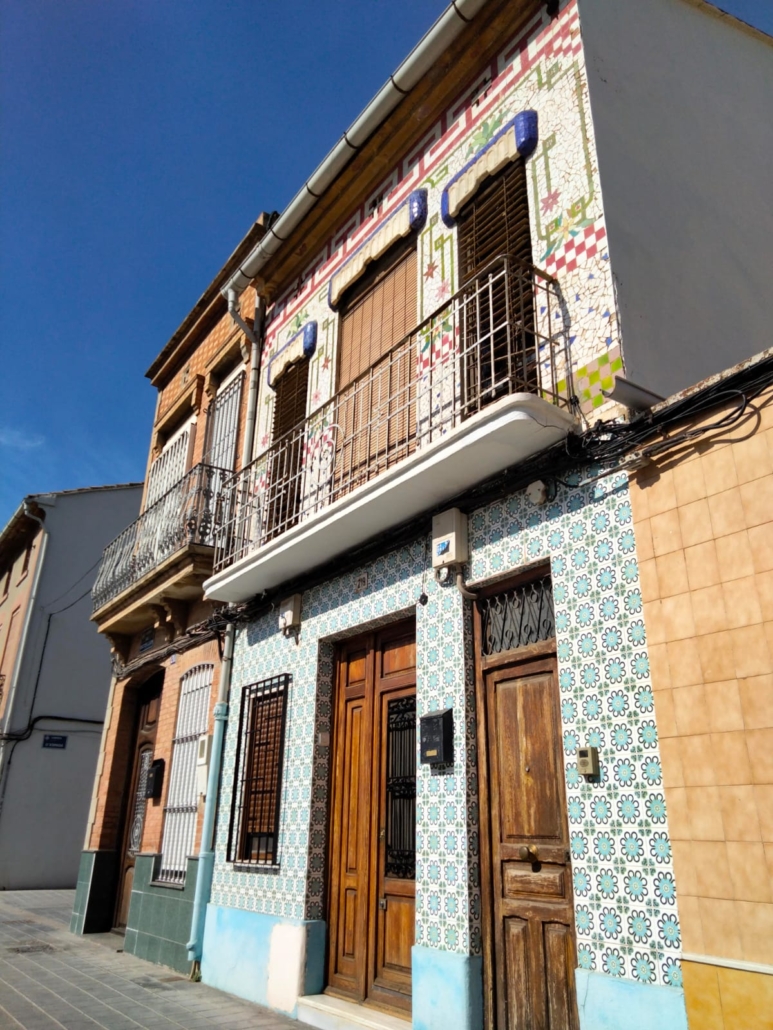
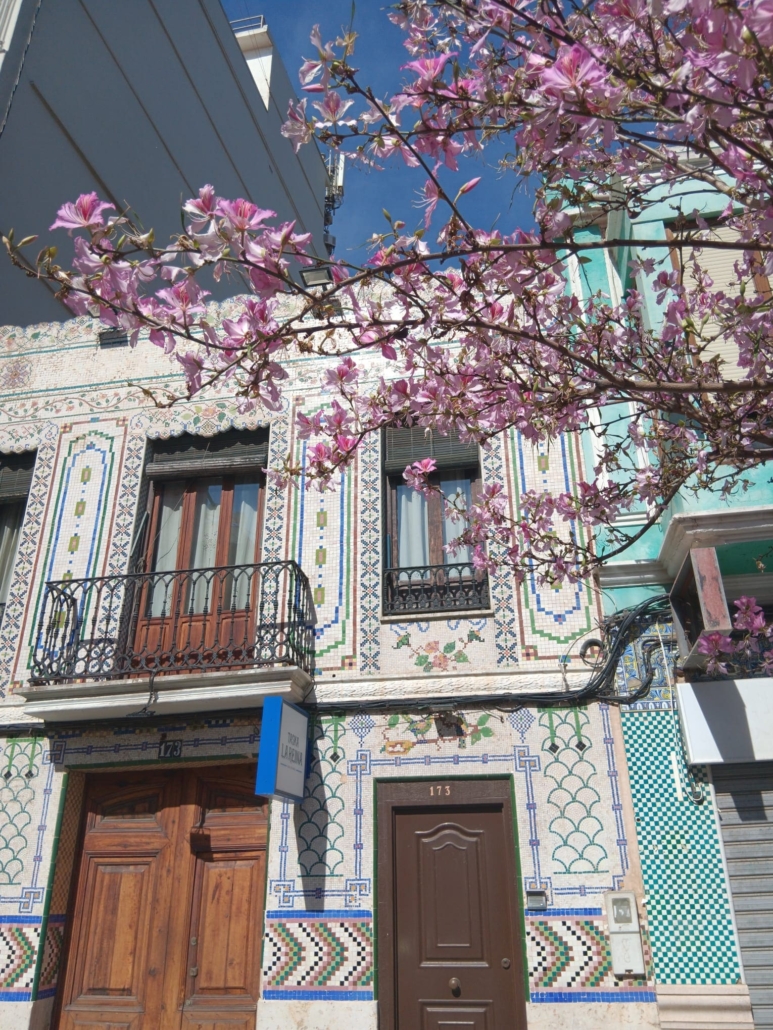
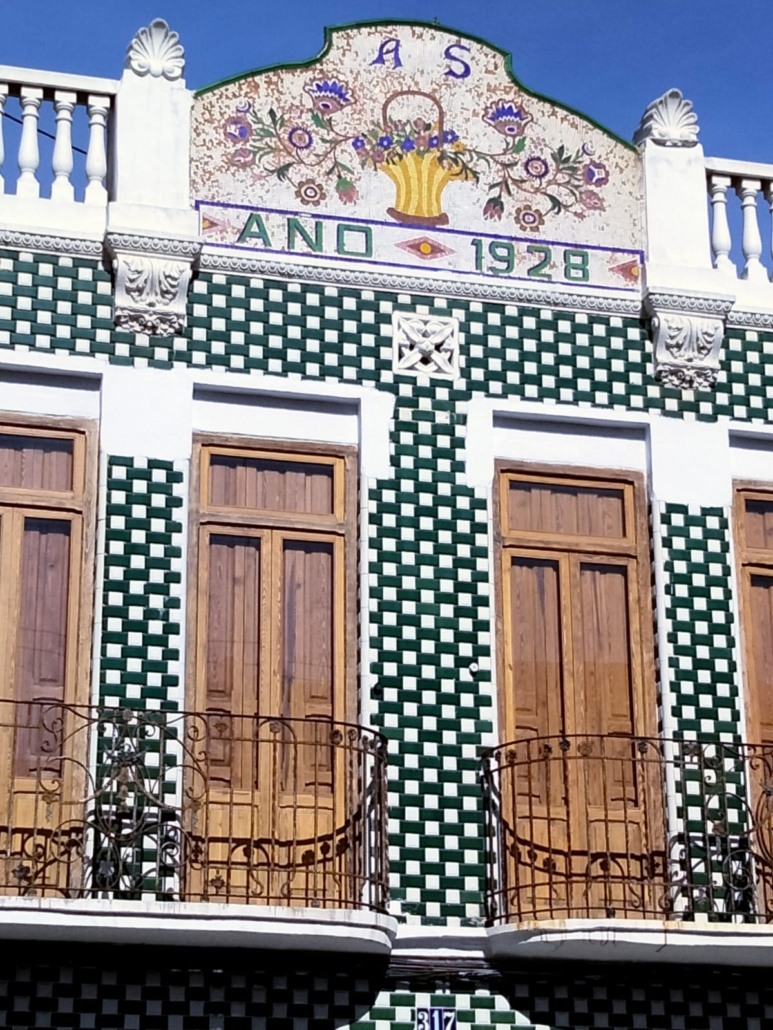
You can go on a facade photo safari through the streets of the neighbourhood oriented north-south and parallel to each other and the sea. In addition to the colourful buildings, there are many geometric art nouveau houses that will surprise you with the elegance of their lines.
2 – GASTRONOMY IN EL CABANYAL
One of the main reasons why the neighbourhood is trendy is the opening of new restaurants that coexist with the more traditional and authentic ones. Due to its history and isolation from the city of Valencia, the Cabanyal has an original gastronomy connected to the sea and nourished by local products.
Centenary establishments such as Kiosko La Aduana, Bodega Montaña, Casa Carmela or Casa Guillermo, are part of the memory of the people of the neighbourhood as the setting for so many moments and family celebrations. There you will find renewed and quality seafood cuisine. In recent years, new establishments such as Anyora, Bar El Cabanyal or La Aldeana have emerged with more contemporary menus that have won a well-deserved place on the neighbourhood’s agenda.
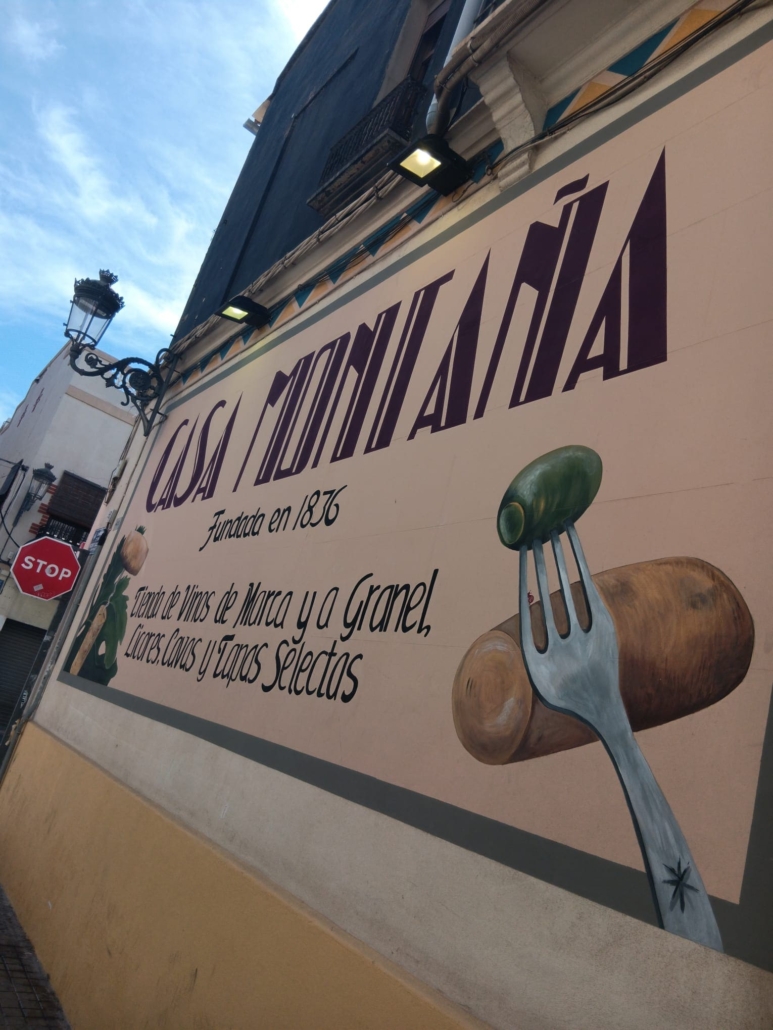
You can also try the plant-based cuisine at La Mestiza or Piedmont specialties at Trattoria Piemontese.
Typical products of the neighbourhood are Titaina (a ratatouille of tomato, pepper and salted tuna), cod meatballs or cuttlefish with onions, which you will find in many bars and restaurants. You can also enjoy the typical Valencian horchata in places such as Helados Venecia or Los Olivares, which also sells home made ice cream.
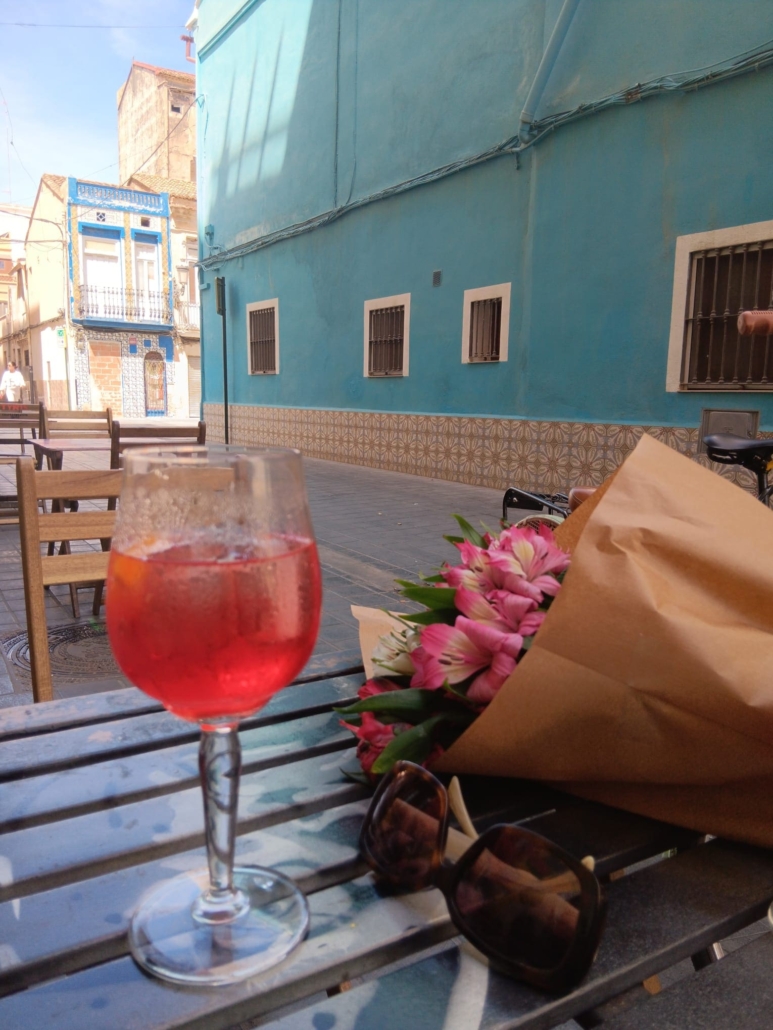
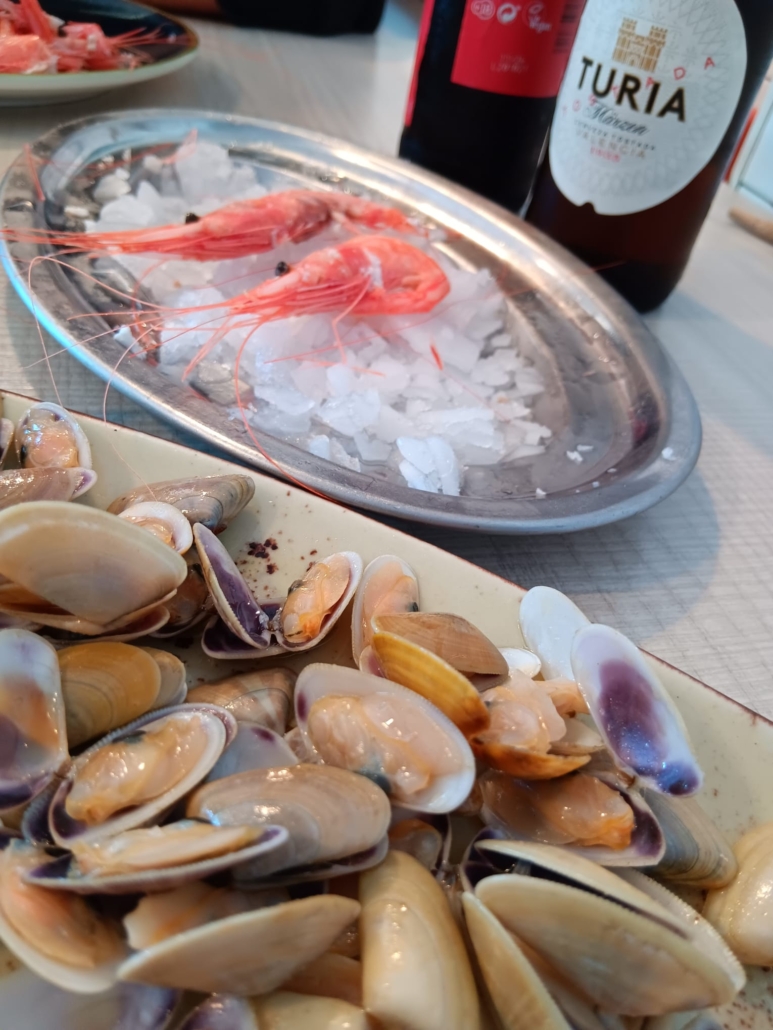
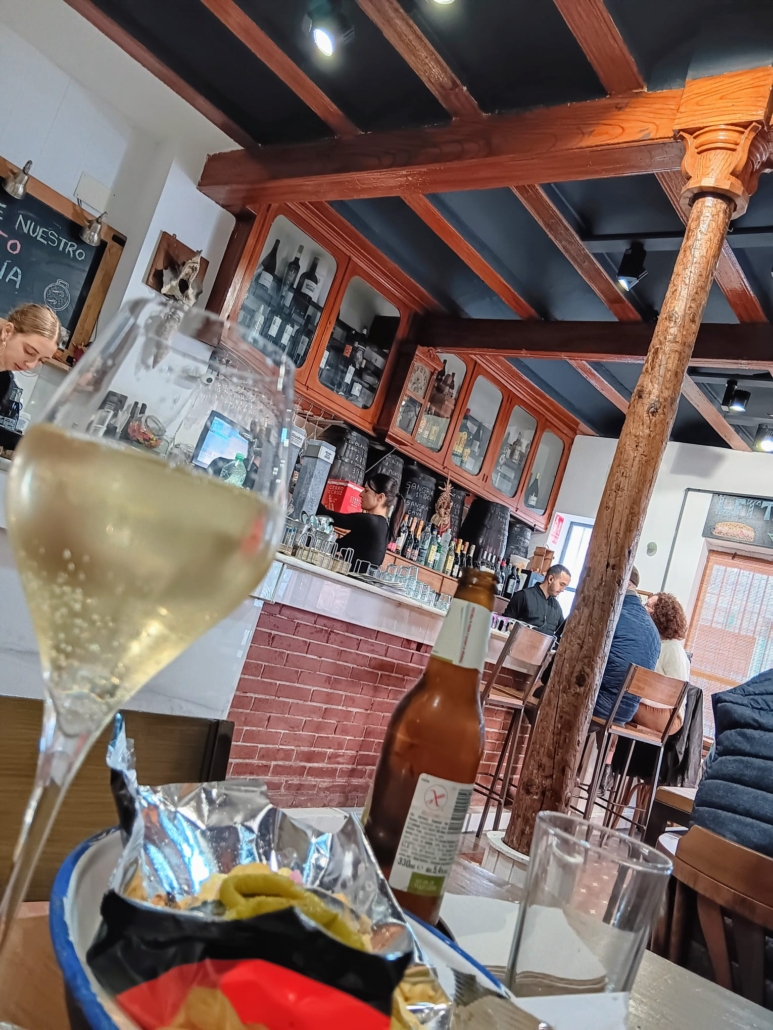
3 – LOCAL CULTURE
The Cabanyal is increasingly hosting all kinds of artistic and cultural events throughout the year. For example, the Teatre El Musical (TEM) brings an excellent programme of theatre, dance and music to the neighbourhood, and events like the festival Cabanyal Íntim deliver theatre performances in private houses and public spaces every year in spring.
For live music lovers, venues such as la Fábrica de Hielo or MarinoJazz organise regular concerts and there is life music almost every Saturday of the year in the Marina pergola. You can also enjoy flamenco at the tablao Palosanto.
The neighbourhood’s museums are the ones dedicated to El Arroz (the rice) and Semana Santa Marinera (the local Holy Week) which are next to each other, and there are regular exhibitions in the old Atarazanas (the middle ages shipyards) and the Edificio del Reloj, also close to the port.
Music is at the heart of El Cabanyal. Neighbours of all ages are part of music societies that are not just oficial music schools but also regular symphonic bands that play in parades during festivities and in concerts throughout the year. El Casinet or la Sociedad Musical Poblados Marítimos are places where the people of El Cabanyal share their love for music.
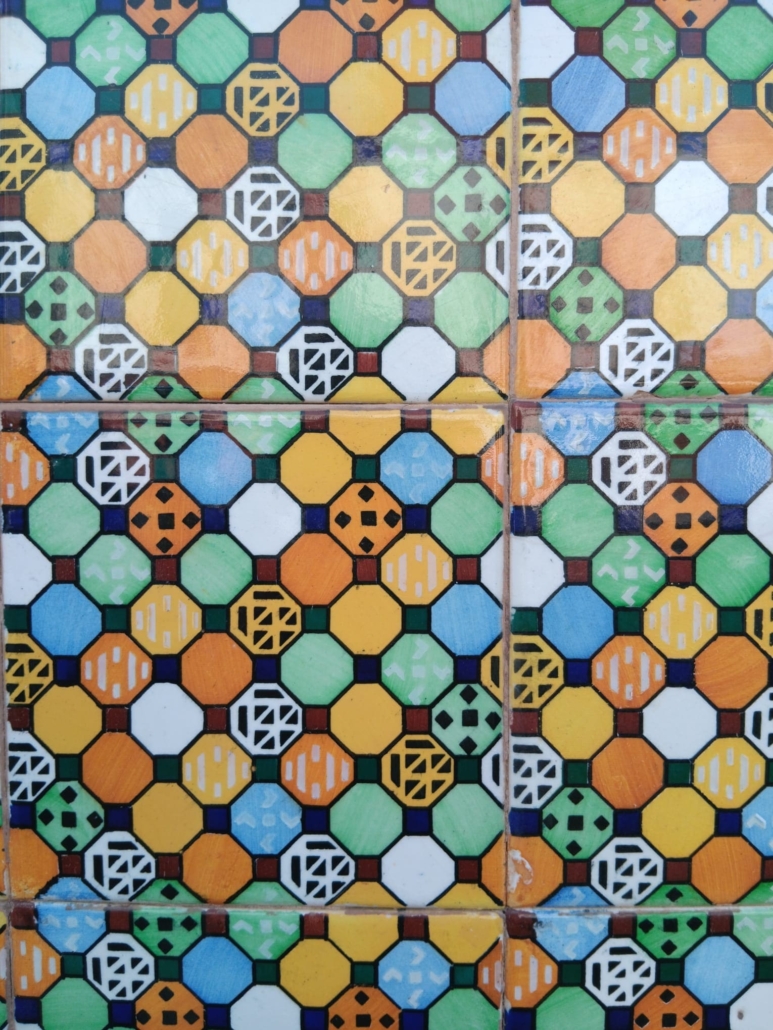
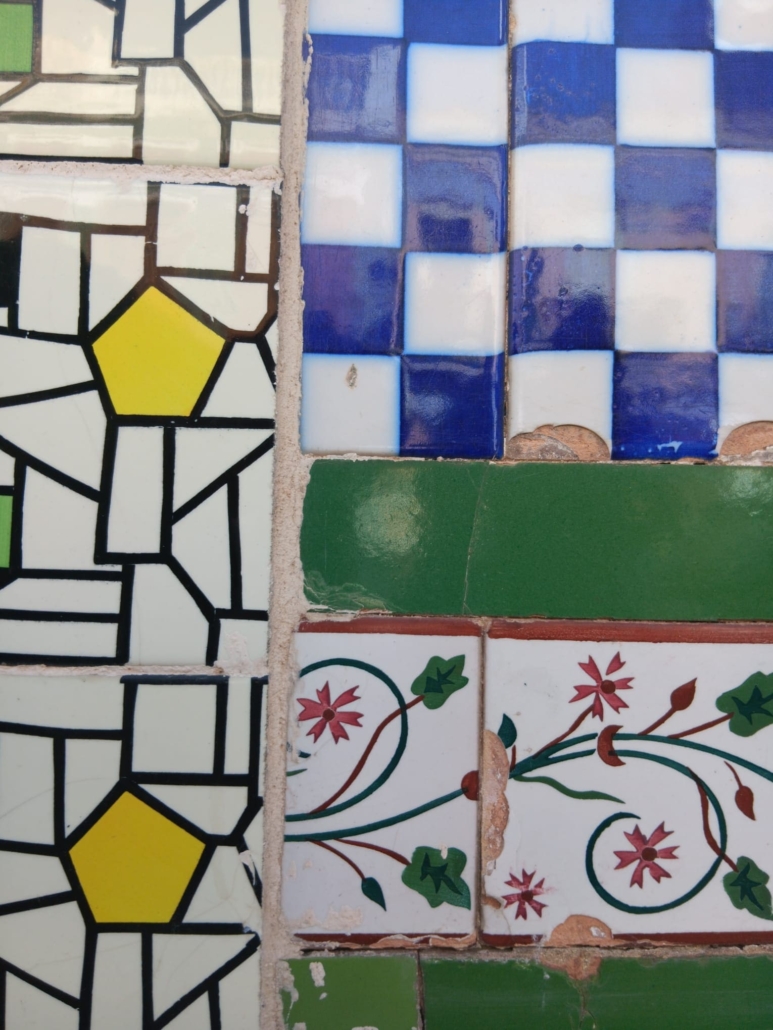
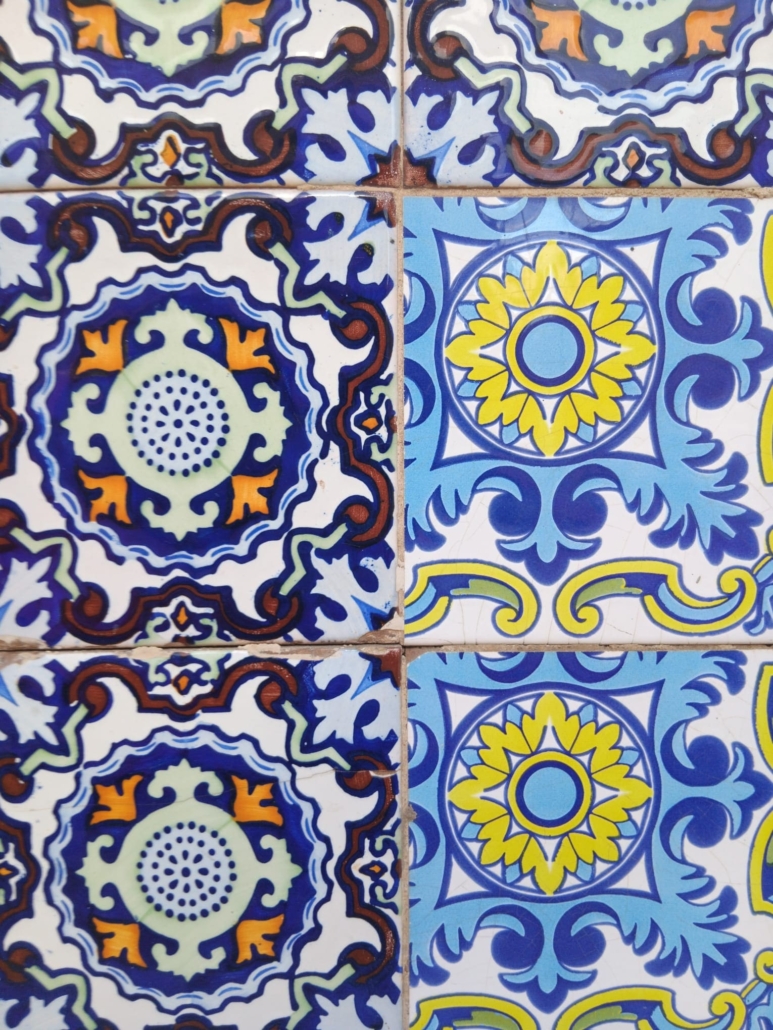
In Calle de la Reina there is a bookshop which is also a restaurant called La Batisfera where you can buy books in different languages. There you can also buy drawings of the Cabanyal by VLCprints, a local artist who perfectly captures the spirit of the neighbourhood in their illustrations and postcards.
4 – FESTIVALS AND TRADITIONS
In the Cabanyal there are two deeply rooted festivals, the Holly Week and the Fallas, which are not only important when they are held in spring but throughout the year as they serve as a social network where neighbours meet and celebrate our traditions together.
The Semana Santa Marinera is especially important as it is unique in Valencia. Each of the four churches in the marine District hosts a number of brotherhoods devoted to the Nazarene (Jesus before the crucifixion), the Crucified Christ or La Virgen Dolorosa. These brotherhoods, or cofradías, remember in the streets the events of the Holy Week in processions where they dress as roman or medieval soldiers, vestas or penitents, grenadiers (napoleonic soldiers) and characters or allegories from the Bible.
The Fallas are the christian adaptation of the mediterranean celebration of the start of the spring with fire. All across the city the neighbours meet in Fallas that are the home of the party, a monument of cardboard to be burned at the end of the week, and host multiple parades with traditional dresses.
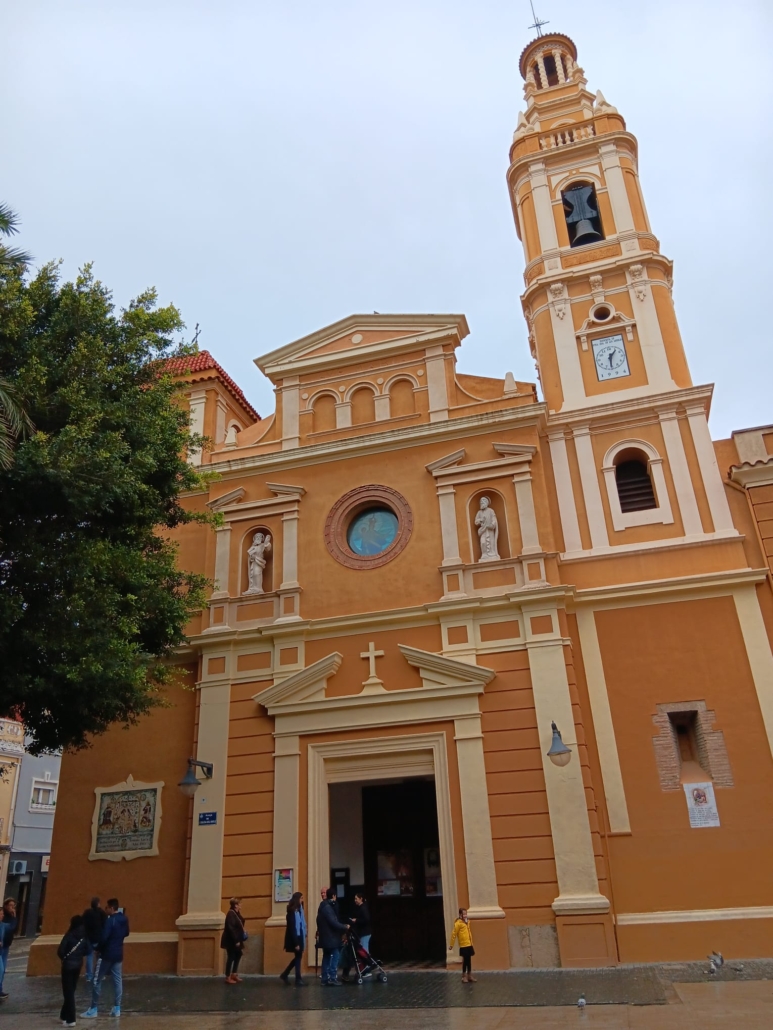
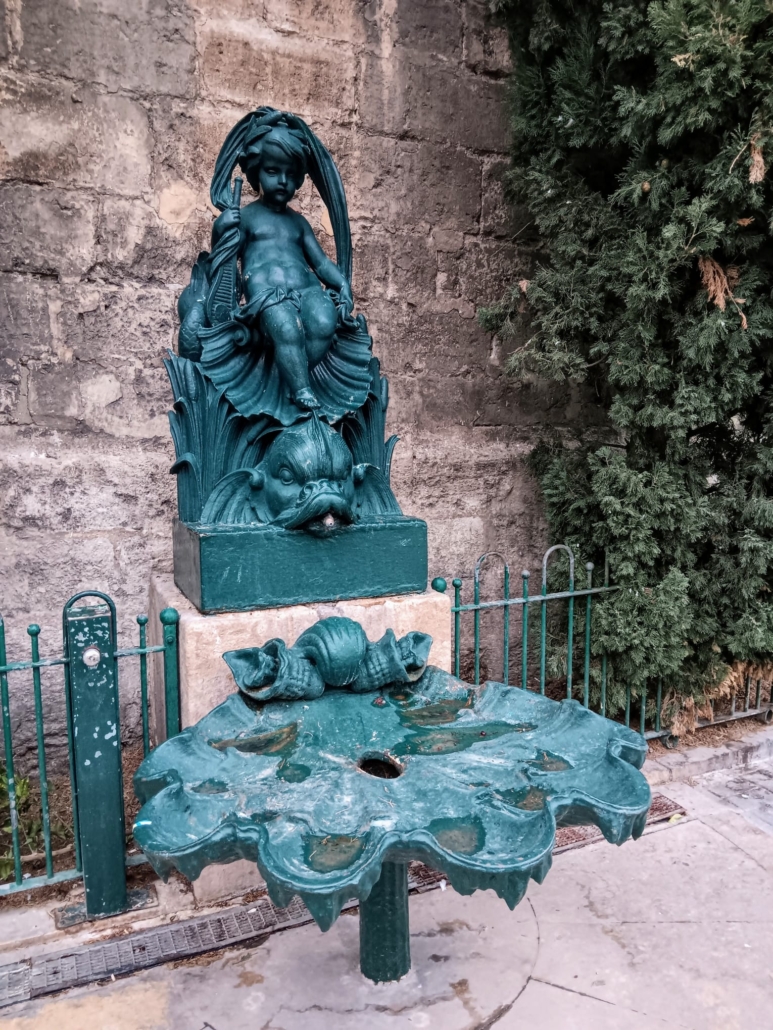
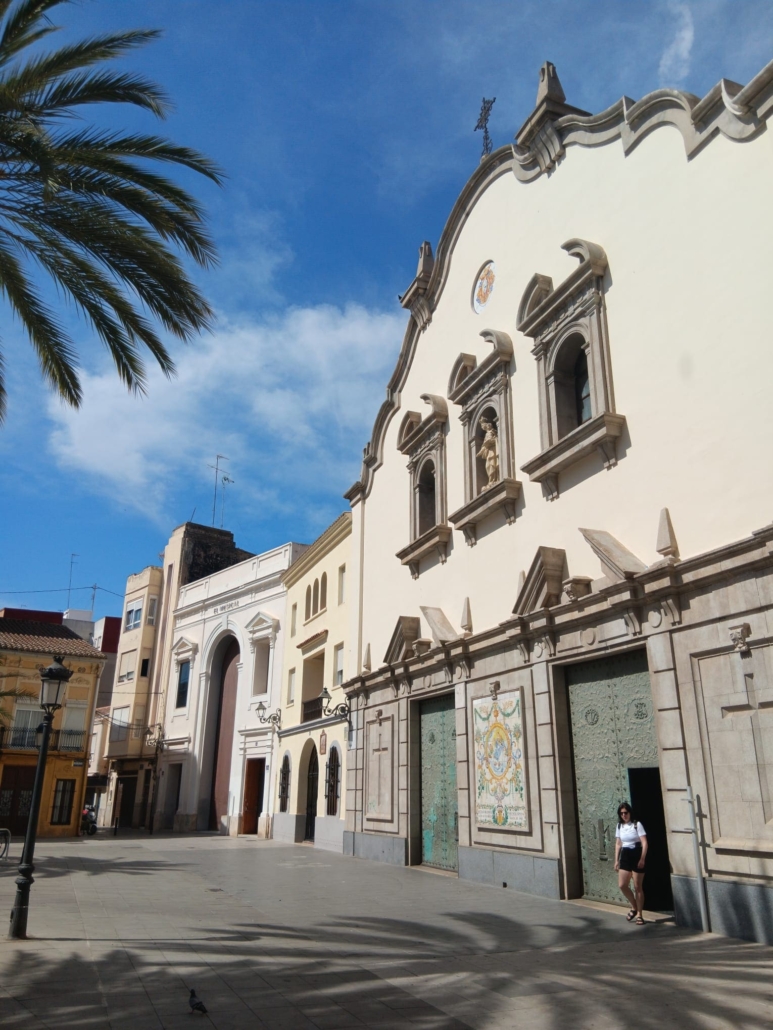
The big days of the Holly Week are the Burial of Christ, which takes place on Good Friday, and the Easter Sunday parade. Both processions feature all the brotherhoods of the neighbourhood, but the Friday procession is heartfelt, austere and slow paced while the Sunday parade is a burst of colour and joy with the brotherhoods handing out flowers to the spectators. For the Fallas the big day is March 19th, but since March 1st there is a powder and sound spectacle in the Plaza del Ayuntamiento for everyone.
5 – THE CABANYAL MARKET
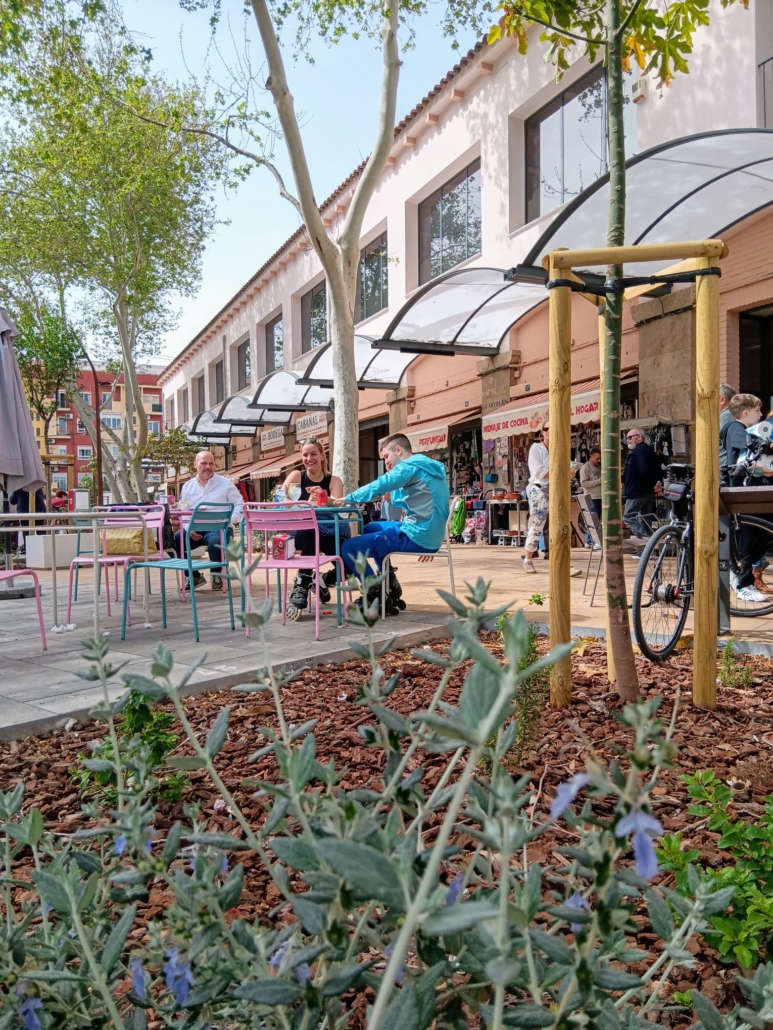
The market, open from Monday to Saturday, has more than 400 stalls (paradas as they are called in Valencia) selling fish, charcuterie and meats, fruit and vegetables, salted fish, eggs, bread and pastries… inside the building. Outside the the building the stall are no longer for food but for flowers, wines, kitchen utensils, craft beers… and finally, also outside, there are stalls for direct sales of small vegetable producers directly to the consumers from Km0.
The market building is relatively recent (from 1958) as the market used to be located in the current Plaça de Llorenç La Flor. It was moved to modernise it and continues to grow with new initiatives such as the installation of solar panels and the opening of the upper floor.
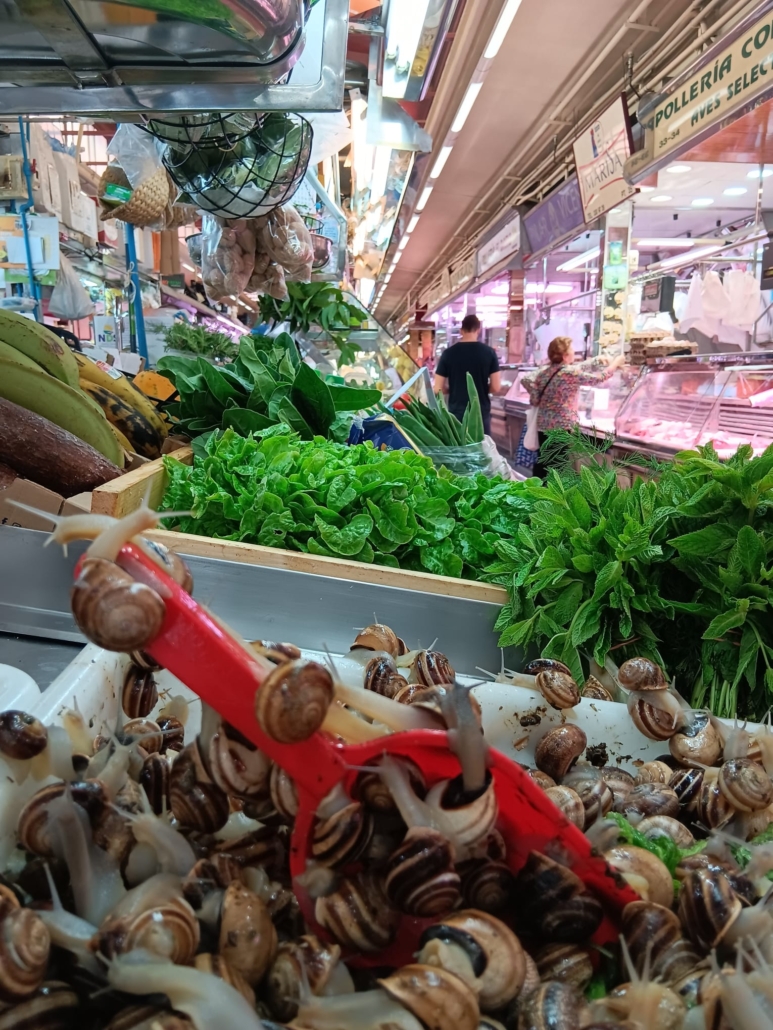

On Thursday mornings, a street market is held in several streets of the neighbourhood near the market, bringing all kinds of clothes, footwear and accessories, kitchen utensils, fabrics and second-hand clothes.
6- THE SEA
The urban planning of the Cabanyal neighbourhood is orthogonal. The grid of the plan is the result of building the houses using as reference the line of the beach on one hand and the irrigation channels of the River Túria that flowed into the sea on the other. The channels are now streets dividing the neighbourhood in three areas: Canyamelar, Cabanyal and Cap de França, from South to North.
The beach of El Cabanyal is called by locals “Las Arenas” after a baths house built in the 30′ of the past century that now is a 5 stars hotel. The promenade was built about 30 years ago and there you can find restaurants, some of them over a hundred years old, specialising in rice such as La Marcelina and La Pepica, or the merenderos (sand bars) such as La Alegría de la Huerta, which were once wooden constructions on the sand and are now integrated in the promenade.
The Marina opens to the public just south of the promenade and is the result of a great work that changed the port to host the America’s Cup regatta celebrations in 2007 and 2010, and Formula-1 between 2008 and 2012. Now that the era of big events is over, the Marina is now an open space for strolling, enjoying the gastronomy, doing sport and, of course, sailing.
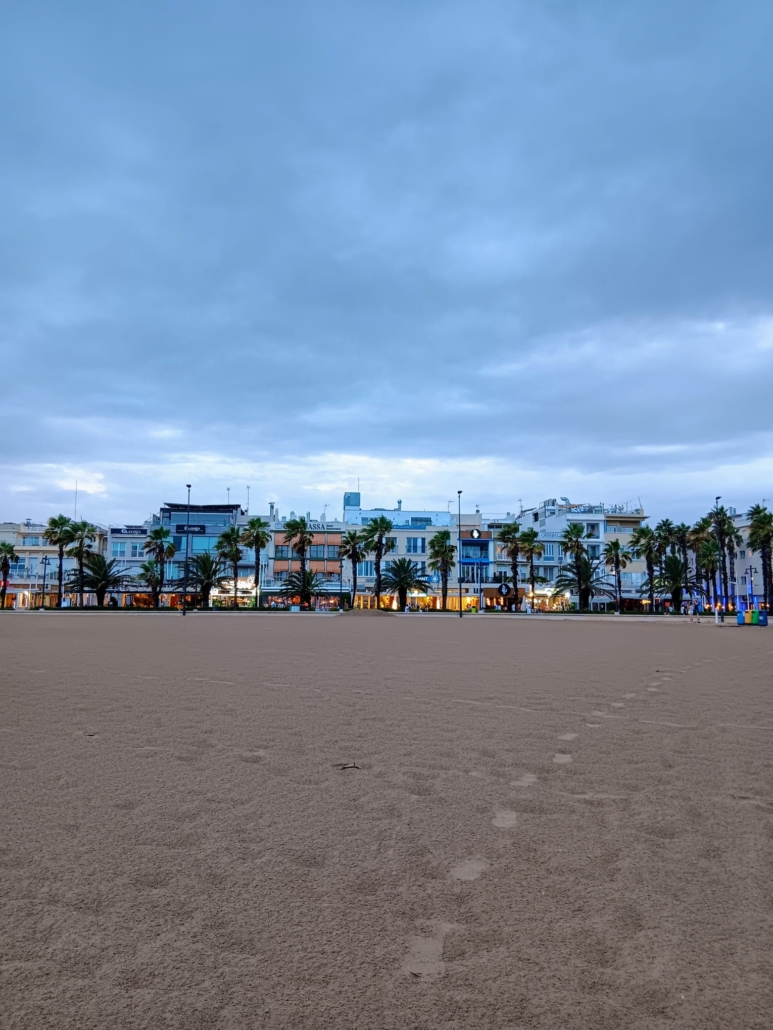
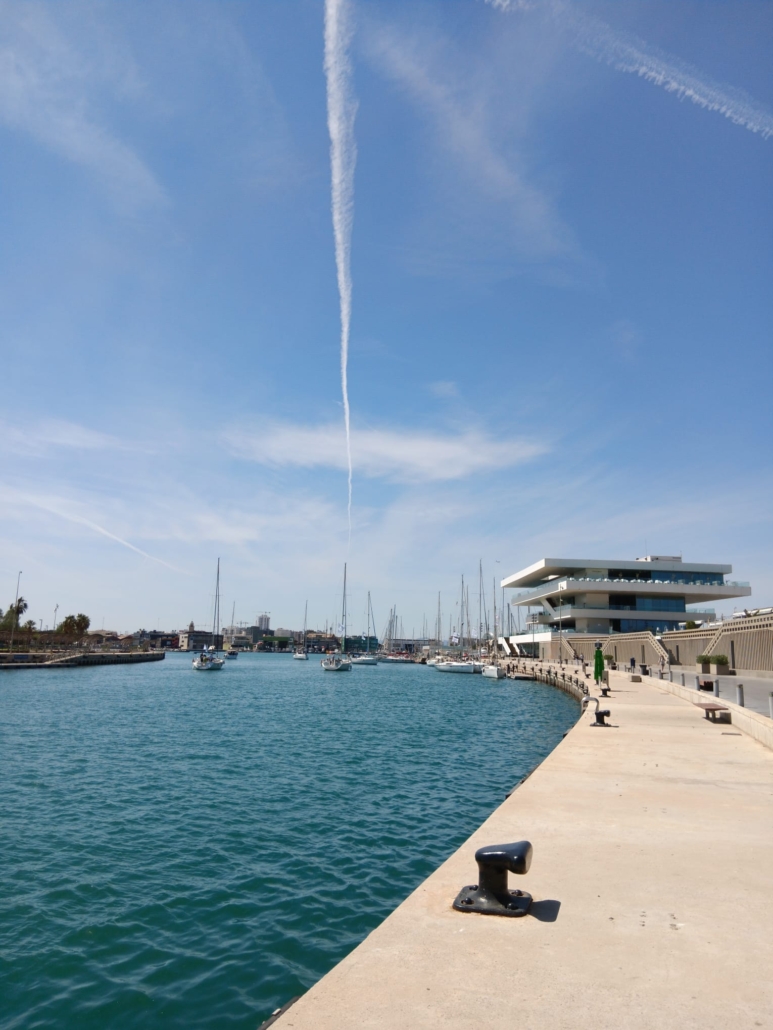
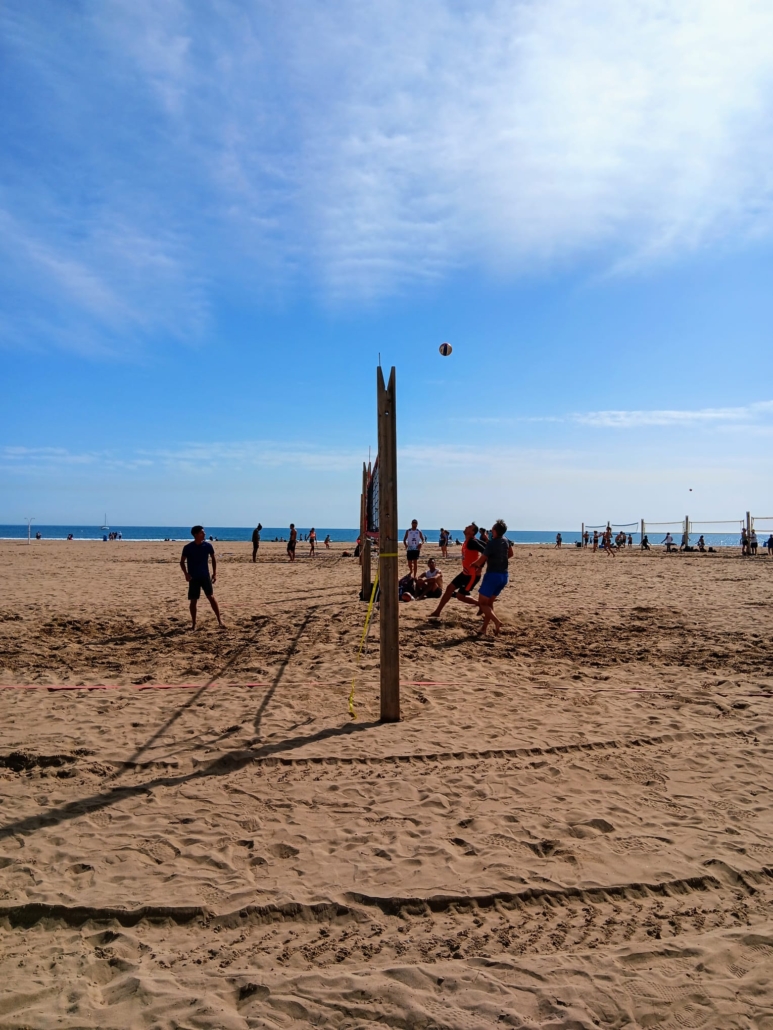
It is possible to practice sports inside the port, from windsurfing to paddle surfing. Even in summer an area of the historic marina is equipped with platforms to allow bathing.

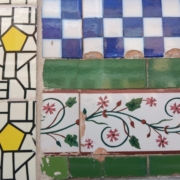


Leave a Reply
Want to join the discussion?Feel free to contribute!